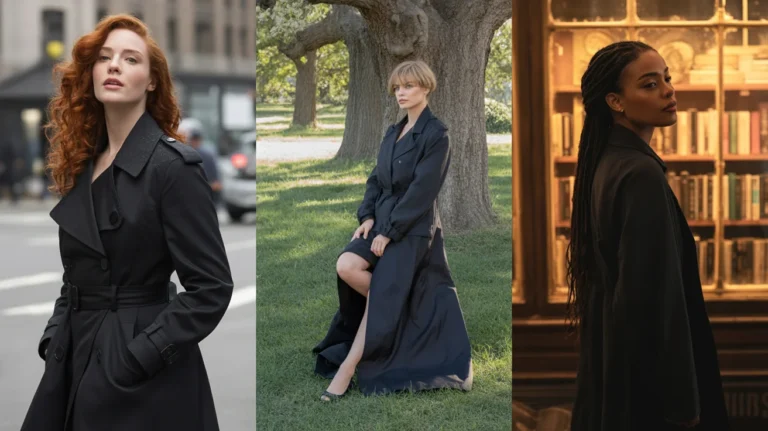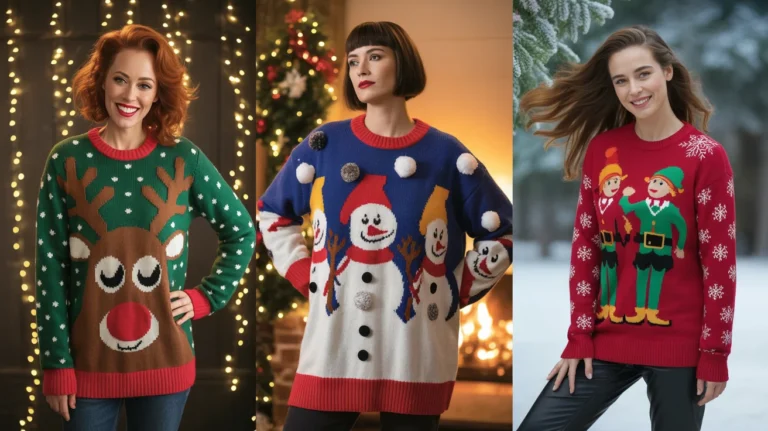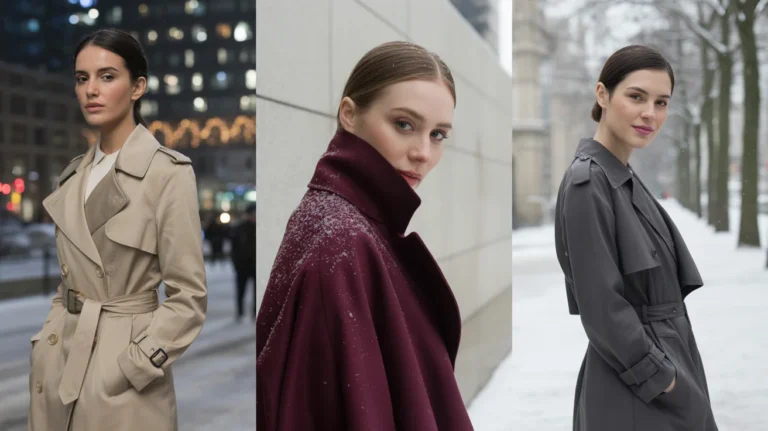Discovering your personal style is an exciting journey that can significantly boost your confidence and reflect your authentic self. Clothes are more than just fabric; they’re an extension of your identity and can tell the world who you are before you even speak. Unlock your unique style by exploring what makes you feel both comfortable and confident.
Start by evaluating your current wardrobe and identifying pieces that make you feel good. Pay attention to patterns, colors, and cuts that resonate with you. This is the foundation of building a wardrobe that feels uniquely yours.
Experimentation is key in finding what works best for you. Visit different stores, try on unfamiliar pieces, and step out of your comfort zone. Pay attention to how different styles make you feel and gather inspiration from fashion icons or online platforms.
Understanding Your Body Shape
Discovering your body shape can unlock a world of style that makes you feel truly confident. Identifying your unique silhouette helps in choosing outfits that highlight your best features.
Identifying Body Types
Body shapes generally fall into a few categories: hourglass, pear, apple, rectangle, and inverted triangle. Each type has distinct characteristics.
- Hourglass: Balanced hips and shoulders with a defined waist.
- Pear: Wider hips than shoulders.
- Apple: Broader shoulders with narrower hips and less defined waist.
- Rectangle: Shoulders, waist, and hips have similar widths.
- Inverted Triangle: Broad shoulders and narrower hips.
Use a measuring tape to measure shoulder, bust, waist, and hip. Compare these to determine your category and understand your natural proportions better.
Choosing Clothes That Flatter
Once you know your body type, you can choose clothes that enhance your silhouette. For an hourglass shape, opt for fitted dresses and belts to accentuate your waist. Pear shapes benefit from A-line skirts and tops that highlight the upper body.
Apple shapes can explore V-necks and empire waistlines for a balanced look, while rectangles may prefer clothing that creates the illusion of curves, like peplum tops. Inverted triangles can balance broader shoulders with flared skirts or pants.
Include a mix of colors, patterns, and textures to add interest. Tailoring can also make a significant difference, ensuring that clothes fit well and reflect your style.
Analyzing Your Current Wardrobe
Understanding your current wardrobe provides insight into what you love wearing and what doesn’t quite suit your tastes. Focus on what makes you feel good and consider what pieces might not align with your style goals.
Sorting Your Favorites
Start by identifying the pieces you reach for most often. These are your go-to favorites that make you feel comfortable and confident. Lay them out and take note of any patterns. You might notice a preference for certain colors, cuts, or fabrics. Use this to pinpoint the elements that define your current taste.
Consider why you like each item. Is it the fit, color, or material? Make a list of these attributes to help guide future purchases. This process helps clarify the style elements that resonate most with you.
Note What Doesn’t Work
Identify pieces in your wardrobe that you seldom wear. Consider why they don’t work for you. Is it the fit, color, or discomfort? Taking the time to analyze these pieces reveals what to avoid in the future.
Some garments might not align with your lifestyle or personal comfort. Others may simply no longer appeal to you. Create a separate section in your closet for these items while you decide whether they can be adapted or should be donated.
Incorporating Personal Influences
Developing your personal style involves drawing from unique aspects of your life. This includes cultural backgrounds, historic traditions, iconic figures, and even your daily surroundings. Identifying what resonates with you can transform your wardrobe into a powerful expression of your identity.
Cultural and Historical Inspirations
Your cultural heritage holds a treasure trove of style inspirations. Traditional clothing, patterns, and colors from your background can be seamlessly integrated into modern outfits.
Consider incorporating specific elements like embroidery or prints associated with your culture. This not only honors your roots but adds depth to your style. Historic fashion trends from various eras can also serve as a guide. Whether it’s the elegant lines of the 1920s or the bold colors of the 1980s, blending these elements with current fashion can create something uniquely yours.
Influential Figures and Icons
Think about people whose style you admire. They might be celebrities, fashion icons, or even close family members. Analyzing what attracts you to their style allows you to identify specific elements to incorporate into your own wardrobe.
Take notes on the color choices, silhouettes, and accessories that stand out. You don’t have to mimic them entirely. Instead, adapt these elements in a way that feels authentic and comfortable for you. Drawing inspiration doesn’t mean losing your individuality—it’s about enhancing it.
Your Lifestyle and Environment
Your daily life and surroundings also play a significant role in shaping your style. Consider the climate, your profession, and daily activities when selecting clothing. If you live in a city with a fast-paced lifestyle, functional yet stylish outfits might work best.
Think about your activities and dress in ways that keep you comfortable, while also presenting your desired image. Personal style is not just about clothing; it’s about how these choices make you feel confident and comfortable in any setting. Balancing practicality with aesthetics is key to developing a style that truly represents who you are.
Color Theory and Fabric Choices
Incorporating the right colors and fabrics into your wardrobe can significantly enhance your personal style. Learn how to select hues that complement your features and choose textiles that suit your lifestyle and comfort needs.
Selecting Your Color Palette
Finding a color palette that harmonizes with your skin tone, hair, and eyes can elevate your appearance. Start by identifying whether you have cool, warm, or neutral undertones. Cool undertones often align well with blues, purples, and pinks, while warm undertones pair nicely with earthy tones like brown, orange, and mustard.
Experiment with bold colors like red or yellow if you’re comfortable making a statement. If you prefer subtlety, shades such as navy or olive can provide a more understated look. Neutrals such as black, white, and gray are versatile and can be the foundation of your wardrobe.
Consider your lifestyle and occasions when choosing your palette. If you’re often in professional settings, classic colors like white or navy might suit your needs. For more casual environments, you might explore brighter or more playful options.
Understanding Textiles and Patterns
Choosing the right fabric is crucial for both comfort and style. Natural fibers like cotton, linen, and wool are breathable, making them perfect for all-day wear. Synthetic fabrics such as polyester or acrylic are generally more durable and wrinkle-resistant, which is great for low-maintenance styling.
Select patterns according to your taste and the message you want to convey. Stripes, for instance, can elongate or broaden your silhouette depending on their direction. Florals offer a softer look, while geometric patterns can give a modern or structured touch.
Also, mix textures to add depth to your outfit. Pairing a silk blouse with denim jeans, for example, can create an interesting contrast that highlights the characteristics of both materials.
Building a Functional Wardrobe
Creating a functional wardrobe involves selecting versatile pieces, accessorizing intentionally, and maintaining your clothing with care. These elements ensure that every item serves a purpose and contributes to your personal style.
Essential Pieces for Every Closet
A functional wardrobe starts with essential pieces. Consider neutral tops like a white shirt and a black blouse. These basics can be paired with various bottoms. Add a well-fitted pair of jeans and a classic skirt. Outerwear such as a tailored blazer or a trench coat can enhance numerous outfits.
For footwear, versatile shoes like black pumps or white sneakers are excellent. These pair effortlessly across different styles. Additionally, a little black dress is a timeless piece that adds elegance whenever needed. Building around these staples ensures you remain stylish while minimizing clutter.
Accessorizing with Purpose
Accessories enhance your outfits and reflect your personality. Choose jewelry according to your style; simple gold or silver pieces offer timeless elegance. Scarves add color and flair, while also providing warmth. Consider a neutral handbag for daily use, ensuring it complements various looks.
Belts can define your waistline and change the silhouette of your outfits. Experiment with different textures and materials to create interest. Select watches that suit your lifestyle, balancing between functionality and style. Always ensure that accessories harmonize rather than overwhelm, maintaining a cohesive look.






